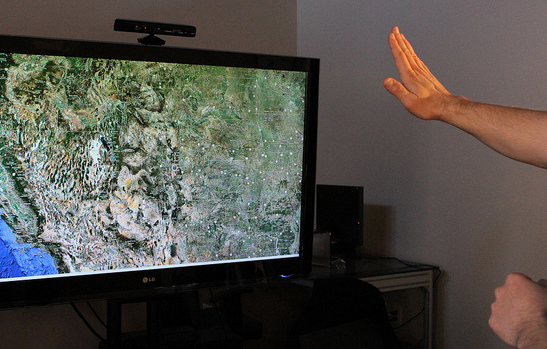Apple has agreed to purchase PrimeSense, a tech start-up that manufactured the 3-D motion-tracking chip used in Microsoft’s Xbox Kinect, Bloomberg reports.
There is no official word on how much the Cupertino, California-based company paid for PrimeSense, but Bloomberg estimates a price tag of approximately $350 million based on reports that came in last week. AllThingsD sources claimed it was closer to $360 million.
The deal was confirmed Sunday by Apple Spokesperson Kristin Huguet, who spoke to Bloomberg by phone. However, there is no word yet on why the Israel-based company was bought out.
“Apple buys smaller technology companies from time to time, and we generally do not discuss our purpose or plans,” Huguet said.
No details were revealed by PrimeSense either, which declined to comment beyond stating that the deal was confirmed, according to USA Today.
PrimeSense, founded in 2005, gained some notoriety for their early work with the Xbox 360 Kinect, released in 2010. It utilizes cameras and depth sensors to track the movements of users and can detect walls, furniture, and other objects that could occupy a room. Microsoft has incorporated this into the gameplay of many recent releases, including Harmonix’s popular Dance Central series, which pits players against each other in realistic dance battles. In its new version of the Kinect, Microsoft has opted to use its own version of the sensor technology. The Xbox One, the latest generation of consoles, ship out with the new Kinects included.
Based on this information, we can’t say for sure what Apple plans to do with PrimeSense’s technology, but there has been a lot of speculation that the manufacturer plans to incorporate 3-D motion sensors into new hardware or software. AllThingsD suggests that it could be used in the long-rumored Apple TV set and a possible smartwatch, although the former seems more likely. The all-in-one Apple entertainment system could rely on motion controls and gestures, which is something many other manufacturers, such as Samsung and LG, have experimented with. The Kinect also allows for a similar experience, with the user being able to swipe through their Xbox Dashboard without having to touch a controller.
The sensors have been used in smaller mobile devices, so it’s not a stretch to see how Apple could use them. For example, California-based start-up Occipital has used a full-sized Carmine sensor for its portable 3-D scanner, which snaps on the back of iPads. Occipital’s Kickstarter reached its $100,000 fund-raising goal in just three and a half hours, showing that there is great interest in the technology. Besides the aforementioned gesture controls, it could be an interesting addition to mobile gaming, giving apps the ability to insert games directly into the surrounding environment, an element that has already been explored on the PlayStation Vita.
What features would you like to see Apple create with 3-D motion sensors?
Photo courtesy of Flickr
[cf]skyword_tracking_tag[/cf]

